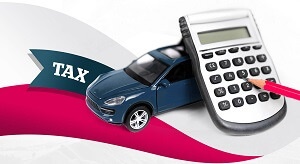4x4 Offroading ›› Vans and Commercials ›› Car or Van?
Car and Van Definition HMRC
Is my vehicle a car or a van? The exact difference between a car and a commercial vehicle for HMRC tax purposes can be confusing at times.
Often, we categorise cars, vans, and even some heavy duty commercial vehicles, by the way that we use them - and sometimes by the way others use them. But, HMRC uses other factors instead!
Defining Cars and Vans: Typical Problems
Some problems can arise over the actual definition of a vehicle for tax purposes. Thus, there are times when you will need to classify whether it is a car or a van.
In fact, you can call it whatever you like. But, it matters not what you call it... or how you use it.
Hence, in so far as the tax authorities are concerned, there is one (1) deciding factor. HMRC base taxation on how it got built.
In short, you will need to define its method of construction (primary importance) as well as its envisaged purpose in life.
Note: This is a method used to define a car or van for Income Tax purposes. You need to use different factors to determine VAT on commercial vehicles in the United Kingdom.
HMRC Income Manual (Car or Van)
You may continue calling it your 4x4 SUV model, commercial, truck, wagon, or anything else you choose. What you call it matters not for the tax man! They have set criteria to decide whether it is a car or van (goods vehicle).
Here's the thing:
From time to time, the tax office will also need to know the classified difference between van and car. But, there are different methods of personal taxation involved if your employer is providing you with the vehicle.
The following information comes from the most current HM Revenue and Customs (HMRC) help guide. Use it to ascertain whether you are the proud owner of a 'car' or a 'van'.
EIM23110 Guide for Cars and Vans
In simple terms, section 115(1) ITEPA 2003 is for taxpayers who are looking for information and guidance about the difference between cars and vans for tax purposes.
 The starting point derives from the definition in Section 115(1) Income Tax (Earnings and Pensions) Act 2003 (ITEPA).
The starting point derives from the definition in Section 115(1) Income Tax (Earnings and Pensions) Act 2003 (ITEPA).
It will help you to decide whether (or not) your vehicle will count as a car for car benefits purposes.
By exception: every mechanically propelled road vehicle gets classified as a 'car', unless it is (any):
- A goods vehicle (a vehicle of a construction primarily suited for the conveyance of goods or burden of any description).
- A motorcycle (as defined in Section 185 Road Traffic Act 1988).
- An invalid carriage (also as defined in that Act).
- A vehicle of a type not commonly used as a private vehicle and unsuitable to be so used. Even so, it usually needs to satisfy the first of the tests in Section 115(1) to escape from getting classified as a car.
Construction of a Vehicle
Vehicle construction generally refers to whether it is 'primarily' suited for the conveyance of goods or burden (not including people). In simple terms, HMRC refers to the predominant purpose of construction.
As a result, they classify the actual use of a vehicle as being irrelevant. A test of construction (not its use) is the statutory test.
This part is important:
Furthermore, even if a manufacturer (or dealer) describes it as being a 'commercial vehicle' - this alone will not be conclusive. But, a vehicle designed and marketed as a multi-purpose vehicle (MPV) will unlikely to fall within this exception.
Note: What if its primary purpose is to carry passengers? In this case, the vehicle will remain within company car legislation. An exception would be a bus (e.g. because of its size). Hence, it only escapes from being defined as a car when the primary purpose for which it is constructed is carrying goods.
Vehicles with Side Windows
What if your vehicle has side windows located behind the driver and passenger doors? If so, it is unlikely to fall within exception(1). For example, vehicles fitted with (or capable of being fitted with) extra seating behind the row that includes the driver (even if the seats are not actually inside the vehicle).
Off Road and Multi-purpose Vehicles
Section 115(1) ITEPA 2003 addresses luxury off road vehicles, four wheel drive recreational vehicles, as well as multi-purpose vehicles. In most cases, these will count as cars, because:
- The design and construction is not 'primarily' for carrying goods or burden (and)
- Nothing renders them unsuitable for private use. In fact, people commonly use them as private vehicles in urban and rural locations.
Even so, there are commercial variants. As a result, they may fall within the exception as outlined at EIM23115 onwards - depending on the particular specifications.
Note: The double cab pick-up tax treatment used by HM Revenue and Customs (HMRC) is not always straight forward. Further guidance is available through EIM23150.
Multi Purpose Vehicle Definition
Those vehicles which are specifically designed to be Multi Purpose Vehicles (MPVs) should be classed as a car for tax and other purposes. This is providing they did not get 'PRIMARILY' constructed for the purpose of carrying goods.
Vehicle Excise Duty and VAT
Income Tax legislation differs from Vehicle Excise Duty for vans as well as Value Added Tax (VAT). As a result, HMRC and various other government agencies can apply different rules for the same vehicle.
An Example:
Type approval at the time the vehicle is first registered will determine its rating for VED. But, the nature of the vehicle at the time of the transaction (or in the relevant tax year) will affect VAT and the tax/NICs regimes.